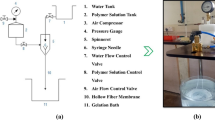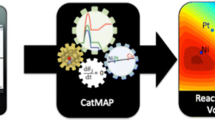Abstract
Predicting the physico-chemical properties of carbon nanotubes (CNTs) is highly demanding owing to tedious experimental efforts involved in their determination. Dispersibility of CNTs in organic solvents is one such property; however, studies involving its quantitative prediction are quite scarce and highly questionable, particularly, when the real external predictivity is desired. This work examines the real external predictivity of the existing models as well as those developed in the present work (using quantum-chemical descriptors) for the dispersibility of single-walled CNTs (SWCNTs). The real external predictivity is assessed on the basis of state-of-the-art external validation parameters obtained by employing an external prediction set which is not exposed to the model used for the prediction. Notably, most of the present and existing models pass through the internal validation, but unfortunately, barring some exception of poly-parameter models, most of the models fail when it comes to the external validation. Their failure was attributed to the descriptors employed which are in fact based on the gas-phase single molecular structure of organic solvents as well as based on the implicit solvent methods. A future approach towards the predictive models for the dispersibility of CNTs is suggested based on the explicit solvent methods.

This quantum mechanical computational work evaluates the real external predictivity of the existing models for the dispersibility of carbon-nanotubes


Similar content being viewed by others
References
Ausman KD, Piner R, Lourie O, Ruoff RS, Korobov M (2000) Organic solvent dispersions of single-walled carbon nanotubes: toward solutions of pristine nanotubes. J Phys Chem B 104:8911–8915
Bergin SD, Sun ZY, Rickard D, Streich PV, Hamilton JP, Coleman JN (2009) Multicomponent solubility parameters for single-walled carbon nanotube-solvent mixtures. ACS Nano 3:2340–2350
Britz DA, Khlobystov AN (2006) Noncovalent interactions of molecules with single walled carbon nanotubes. Chem Soc Rev 35:637–659
Chayawan, Vikas (2015) Externally predictive single-descriptor based QSPRs for physico-chemical properties of polychlorinated-naphthalenes: exploring relationships of log SW, log KOA, and log KOW with electron-correlation. J Hazard Mater 296:68–81
Chayawan, Vikas (2016) Quantum-mechanical parameters for the physico-chemical properties of multi-walled carbon-nanotubes: a study using adsorption of probe compounds and its application to biomolecules. Environ Pollut 218:615–624
Cheng Q, Debnath S, Gregan E, Byrne HJ (2008) Effect of solvent solubility parameters on the dispersion of single-walled carbon nanotubes. J Phys Chem C 112:20154–20158
Cheng Q, Debnath S, Gregan E, Byrne HJ (2010) Ultrasound-assisted SWNTs dispersion: effects of sonication parameters and solvent properties. J Phys Chem C 114:8821–8827
Chirico N, Gramatica P (2011) Real external predictivity of QSAR models: how to evaluate it? Comparison of different validation criteria and proposal of using the concordance correlation coefficient. J Chem Inf Model 51:2320–2335
Chirico N, Gramatica P (2012) Real external predictivity of QSAR models. Part 2. New intercomparable thresholds for different validation criteria and the need for scatter plot inspection. J Chem Inf Model 52:2044–2058
Chirico N, Papa E, Kovarich S, Cassani S, Gramatica P (2012) QSARINS, Software for QSAR MLR Model Development and Validation, QSAR Res. Unit in Environ. Chem. and Ecotox. DiSTA, University of Insubria, Varese, Italy. http://www.qsar.it
Consonni V, Ballabio D, Todeschini R (2009) Comments on the definition of the Q2 parameter for QSAR validation. J Chem Inf Model 49:1669–1678
Cramer CJ (2004) Essentials of computational chemistry: theories and models, 2nd edn. John Wiley & Sons, Chichester
Crescenzo AD, Ettorre V, Fontana A (2014) Non-covalent and reversible functionalization of carbon nanotubes. Beilstein J Nanotechnol 5:1675–1690
Cruciani G, Carosati E, Clementi S (2003) Three-dimensional quantitative structure property relationships. In: Camille GW (ed) The practice of medicinal chemistry, 2nd edn. Academic Press, London
Debnath S, Cheng Q, Hedderman TG, Byrne HJ (2008) A study of the interaction between single-walled carbon nanotubes and polycyclic aromatic hydrocarbons: toward structure-property relationships. J Phys Chem C 112:10418–10422
Dresselhaus G, Dresselhaus MS, Saito R (2003) Physical properties of carbon nanotubes. Imperial College Press, London
Dresselhaus MS, Dresselhaus G, Charlier JC, Hernandez E (2004) Electronic, thermal and mechanical properties of carbon nanotubes. Phil Trans R Soc Lond A 362:2065–2098
Dyke CA, Tour JM (2004) Covalent functionalization of single-walled carbon nanotubes for materials applications. J Phys Chem A 108:11151–11159
Freitag M, Martin Y, Misewich JA, Martel R, Avouris P (2003) Photoconductivity of single carbon nanotubes. Nano Lett 3:1067–1071
Frisch MJ et al (2009) Gaussian 09, Revision A.02, Gaussian Inc, Wallingford CT
Gamsjager H, Lorimer JW, Scharlin P, Shaw DG (2008) Glossary of terms related to solubility. Pure Appl Chem 80:233–276
Geckeler KE, Premkumar T (2011) Carbon nanotubes: are they dispersed or dissolved in liquids? Nanoscale Res Lett 6:136–139
Giordani S, Bergin SD, Nicolosi V, Lebedkin S, Kappes MM, Blau WJ, Coleman JN (2006) Debundling of single-walled nanotubes by dilution: observation of large populations of individual nanotubes in amide solvent dispersions. J Phys Chem B 110:15708–15718
Girifalco LA, Hodak M, Lee RS (2000) Carbon nanotubes, buckyballs, ropes, and a universal graphitic potential. Phy Rev B 62:13104–13110
Gramatica P, Chirico N, Papa E, Cassani S, Kovarich S (2013) QSARINS: a new software for the development, analysis and validation of QSAR MLR model, software news and updates. J Comput Chem 34:2121–2132
Hill JG (2013) Gaussian basis sets for molecular applications. Int J Quantum Chem 113:21–34
Hong S, Myung S (2007) Nanotube electronics: a flexible approach to mobility. Nat Nanotechnol 2:207–208
Hu C-Y, Xu Y-J, Duo S-W, Zhang R-F, Li M-S (2009) Non-covalent functionalization of carbon nanotubes with surfactants and polymers. J Chin Chem Soc 56:234–239
Jeffery A, Harsh C, Michael F, Natalie H, Jordan P (2010) Illustrated in handbook of nanophysics. Dispersions and aggregation of carbon nanotubes. CRC Press, Boca Raton
Jensen F (2007) Introduction to computational chemistry, 2nd edn. John Wiley & Sons, Chichester
Landi BJ, Ruf HJ, Worman JJ, Raffaelle RP (2004) Effects of alkyl amide solvents on the dispersion of single-wall carbon nanotubes. J Phys Chem B 108:17089–17095
Langer T, Bryant SD (2008) 3D quantitative structure–property relationships. In: Camille Georges W (ed) The practice of medicinal chemistry, 3rd edn. Academic Press, New York
McNaught AD, Wilkinson A (1997) IUPAC Compendium of Chemical Terminology, (the “Gold Book”), 2nd edn. Oxford: Blackwell Science; 1997 [http://goldbook.iupac.org], XML on-line corrected version: 2006, created by Nic M, Jirat J, Kosata B, updates compiled by Jenkins A
Miertuš S, Scrocco E, Tomasi J (1981) Electrostatic interaction of a solute with a continuum. A direct utilization of ab initio molecular potentials for the prevision of solvent effects. Chem Phys 55:117–129
Ojha PK, Mitra I, Das RN, Roy K (2011) Further exploring r2m metrics or validation of QSPR models data set. Chemom Intell Lab Syst 107:194–205
Park JW, Kim J, Lee JO, Kang KC, Kim JJ, Yoo KH (2002) Effects of artificial defects on the electrical transport of single-walled carbon nanotubes. Appl Phys Lett 80:133–135
Reenu, Vikas (2014) Electron-correlation based externally predictive QSARs for mutagenicity of nitrated-PAHs in Salmonella typhimurium TA100. Ecotoxicol Environ Saf 101:42–50
Reenu, Vikas (2015a) Role of exchange and correlation in the real external prediction of mutagenicity: performance of hybrid and meta-hybrid exchange–correlation functionals. RSC Adv 5:29238–29251
Reenu, Vikas (2015b) Exploring the role of quantum chemical descriptors in modeling acute toxicity of diverse chemicals to Daphnia magna. J Mol Graph Model 61:89–101
Reenu, Vikas (2016) Evaluating the role of electron-correlation in the external prediction of the toxicity of nitrobenzenes towards Tetrahymena pyriformis. New J Chem 40:2343–2353
Rofouei MK, Salahinejad M, Ghasemi JB (2014) An alignment independent 3D-QSAR modeling of dispersibility of single-walled carbon nanotubes in different organic solvents. Fullerenes Nanotubes Carbon Nanostruct 22:605–617
Saini RK, Chiang IW, Peng H, Smalley RE, Billups WE, Hauge RH, Margrave JL (2003) Covalent sidewall functionalization of single wall carbon nanotubes. J Amer Chem Soc 125:3617–3621
Salahinejad M, Zolfonoun E (2013) QSAR studies of the dispersion of SWNTs in different organic solvents. J Nanopart Res 15:2028–2036
Schüürmann G, Ebert R, Chen J, Wang B, Kühne R (2008) External validation and prediction employing the predictive squared correlation coefficients test set activity mean vs training set activity mean. J Chem Inf Model 48:2140–2145
Shi LM, Fang H, Tong W, Wu J, Perkins R, Blair RM, Branham WS, Dial SL, Moland CL, Sheehan DM (2001) QSAR models using a large diverse set of estrogens. J Chem Inf Comput Sci 41:186–195
Szabo A, Ostlund NS (1982) Modern quantum chemistry: introduction to advanced electronic structure theory. MacMillan, New York
Tropsha A, Gramatica P, Gombar VK (2003) The importance of being earnest: validation is the absolute essential for successful application and interpretation of QSPR models. QSAR Comb Sci 22:69–77
Vikas, Chayawan (2014) Externally predictive quantitative modeling of supercooled liquid vapor pressure of polychlorinated-naphthalenes through electron-correlation based quantum–mechanical descriptors. Chemosphere 95:448–454
Vikas, Chayawan (2015) Single-descriptor based quantum-chemical QSPRs for physico-chemical properties of polychlorinated-dibenzo-p-dioxins and-dibenzo-furans (PCDD/Fs): Exploring the role of electron-correlation. Chemosphere 118:239–245
Vikas, Reenu, Chayawan (2013) Does electron-correlation has any role in the quantitative structure-activity relationships? J Mol Graph Model 42:7–16
Weigend F, Ahlrichs R (2005) Balanced basis sets of split valence, triple zeta valence and quadruple zeta valence quality for H to Rn: design and assessment of accuracy. Phys Chem Chem Phys 7:3297–3305
Worsley KA, Kalinina I, Bekyarova E, Haddon RC (2009) Functionalization and dissolution of nitric acid treated single-walled carbon nanotubes. J Am Chem Soc 131:18153–18158
Yilmaz H, Rasulev B, Jerzy Leszczynski J (2015) Modeling the dispersibility of single walled carbon nanotubes in organic solvents by quantitative structure-activity relationship approach. Nano 5:778–791
Zhao Y-L, Stoddart JF (2009) Noncovalent functionalization of single-walled carbon nanotubes. Acc Chem Res 42:1161–1171
Zhao Y, Truhlar DG (2008) The M06 suite of density functionals for main group thermochemistry, thermochemical kinetics, noncovalent interactions, excited states, and transition elements: two new functionals and systematic testing of four M06-class functionals and 12 other functionals. Theor Chem Accounts 120:215–241
Ziegler KJ, Gu Z, Peng H, Flor EL, Hauge RH, Smalley RE (2005) Controlled oxidative cutting of single-walled carbon nanotubes. J Am Chem Soc 127:1541–1547
Acknowledgements
One of the authors, Suman Lata, is grateful to Council of Scientific and Industrial Research (CSIR) India for providing JRF-NET fellowship. The authors thank Department of Chemistry, Panjab University, Chandigarh, for providing computational software and resources. The authors are grateful to Prof. Gramatica for providing QSARINS software.
Author information
Authors and Affiliations
Corresponding author
Ethics declarations
This study was not funded.
Conflict of interest
The authors declare that they have no conflict of interest.
Rights and permissions
About this article
Cite this article
Suman Lata, Vikas Dispersibility of carbon nanotubes in organic solvents: do we really have predictive models?. J Nanopart Res 19, 211 (2017). https://doi.org/10.1007/s11051-017-3883-x
Received:
Accepted:
Published:
DOI: https://doi.org/10.1007/s11051-017-3883-x




